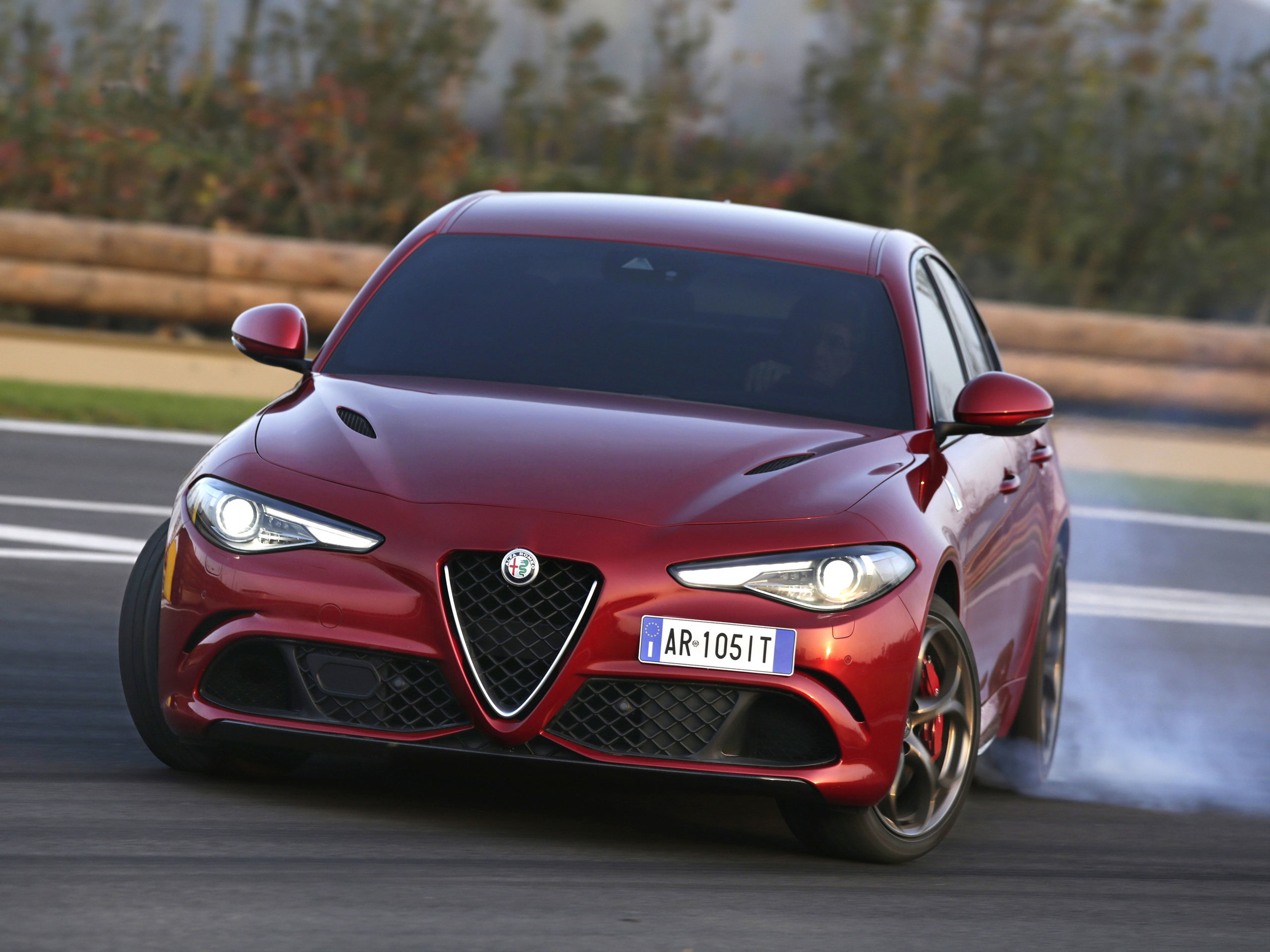
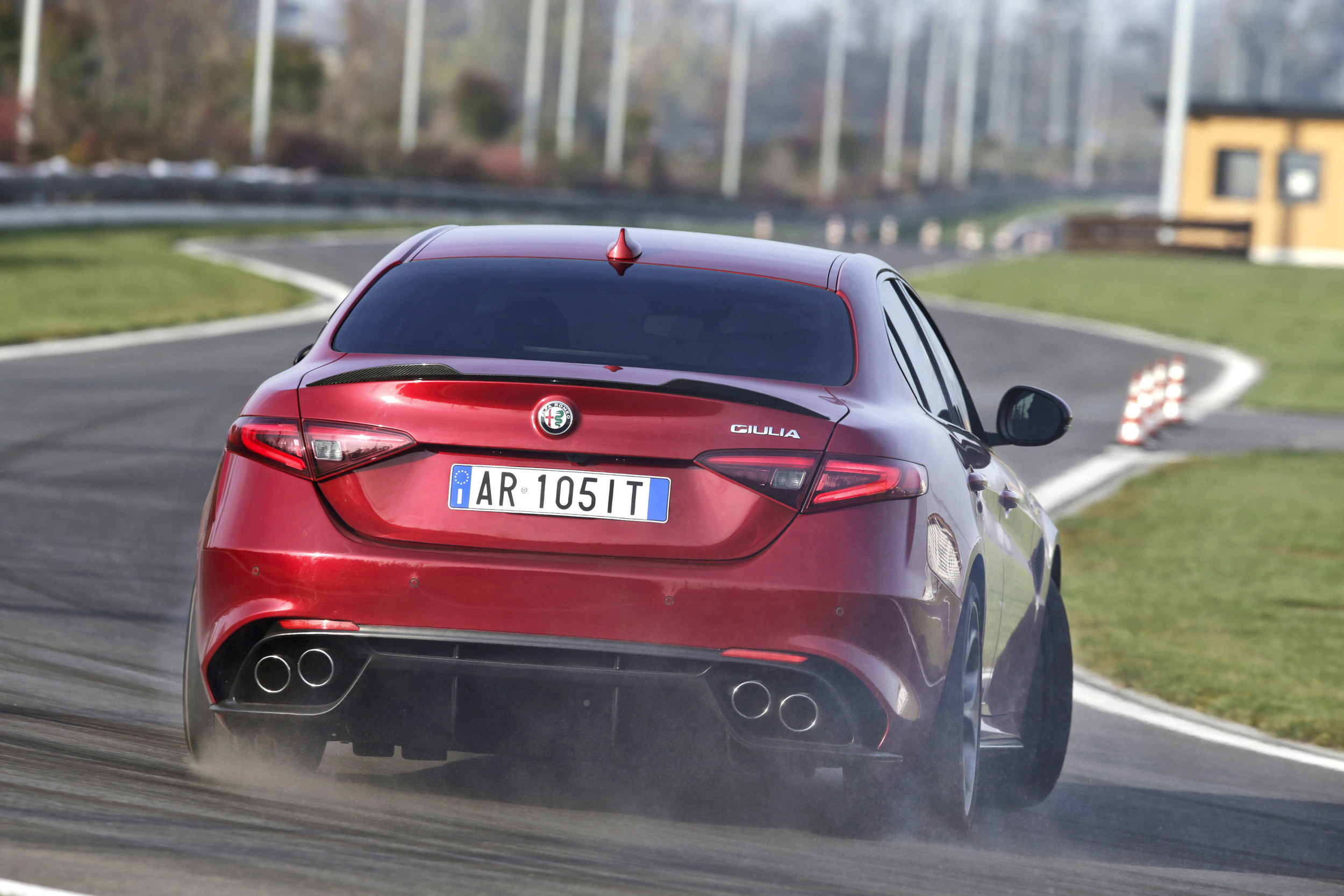
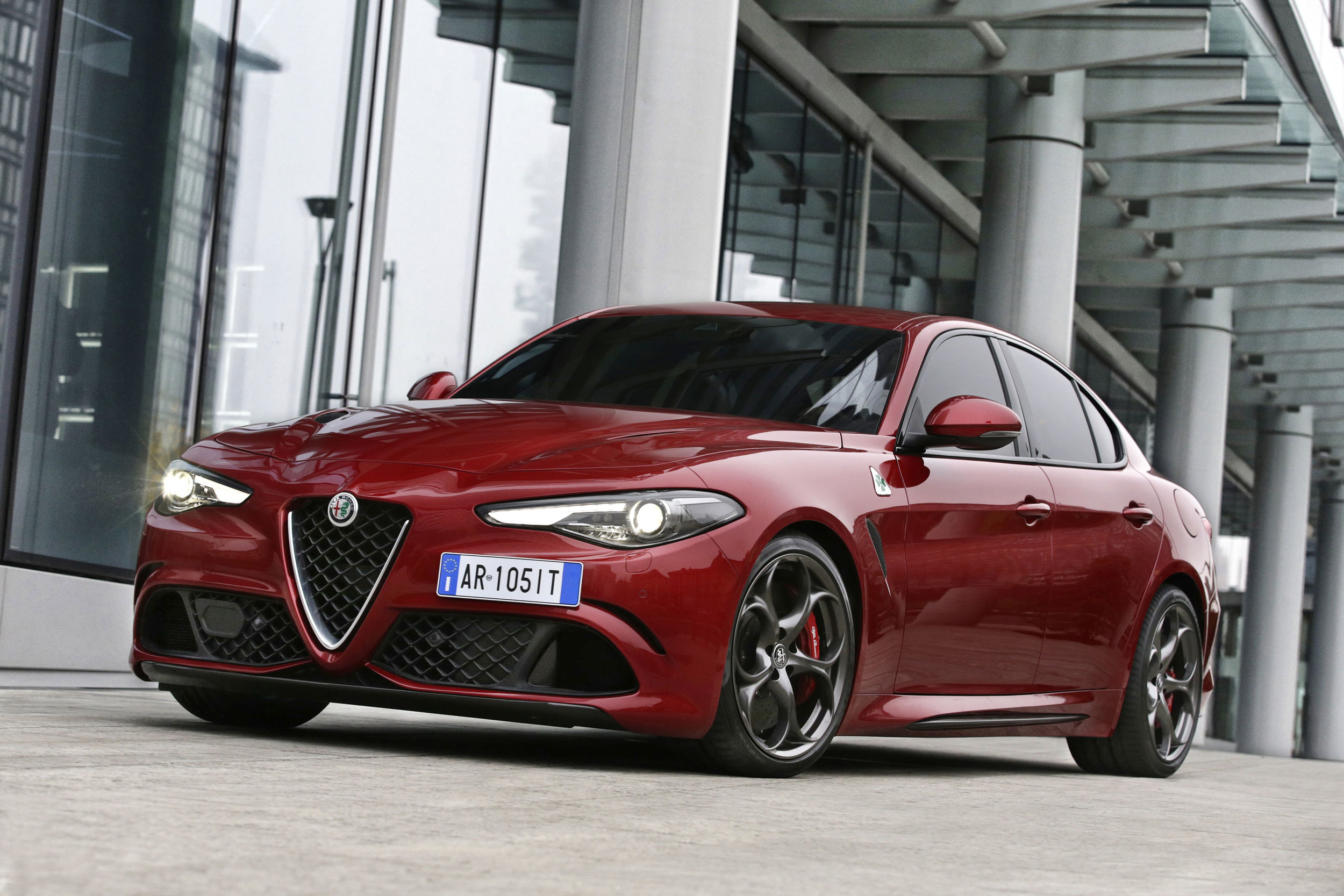
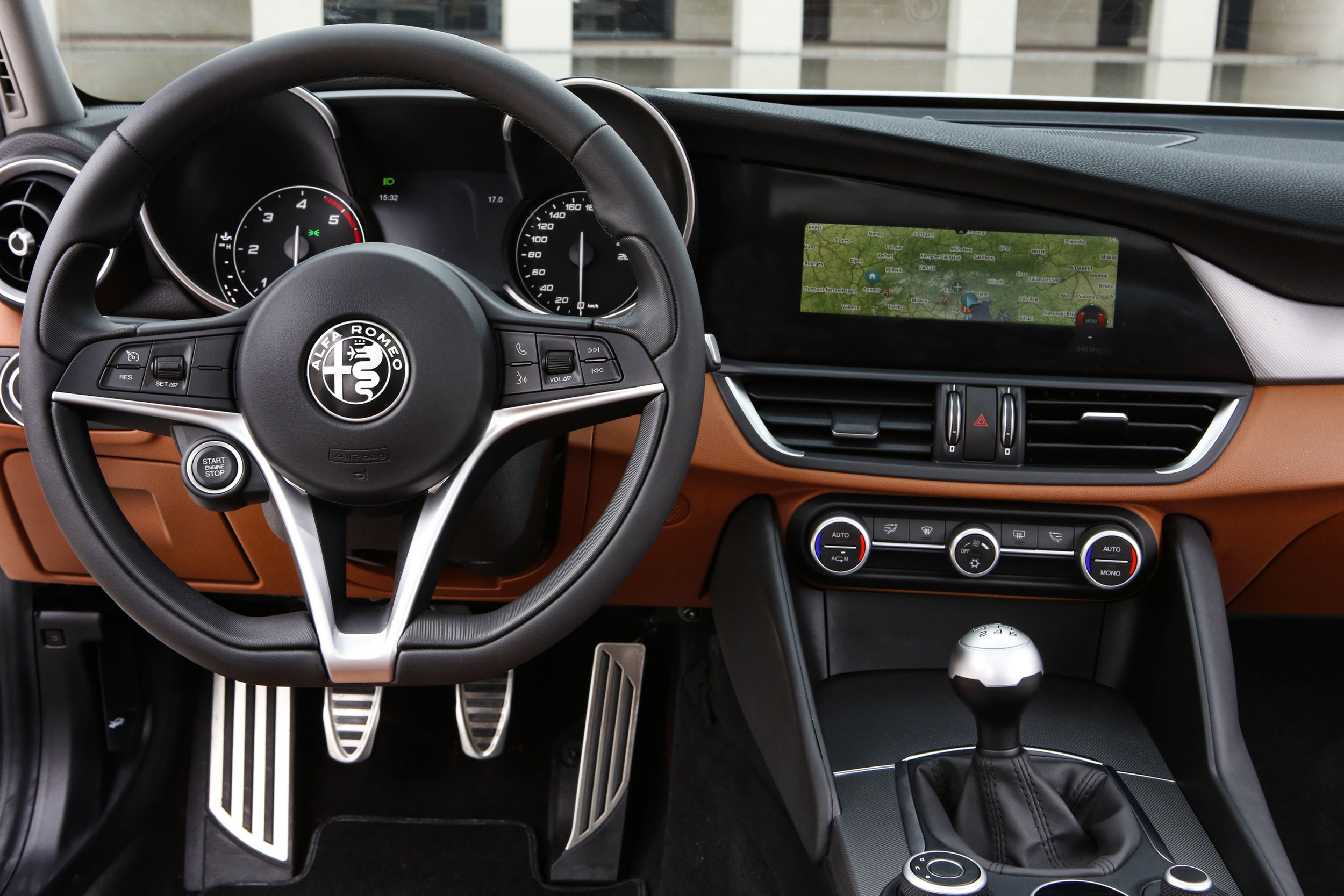
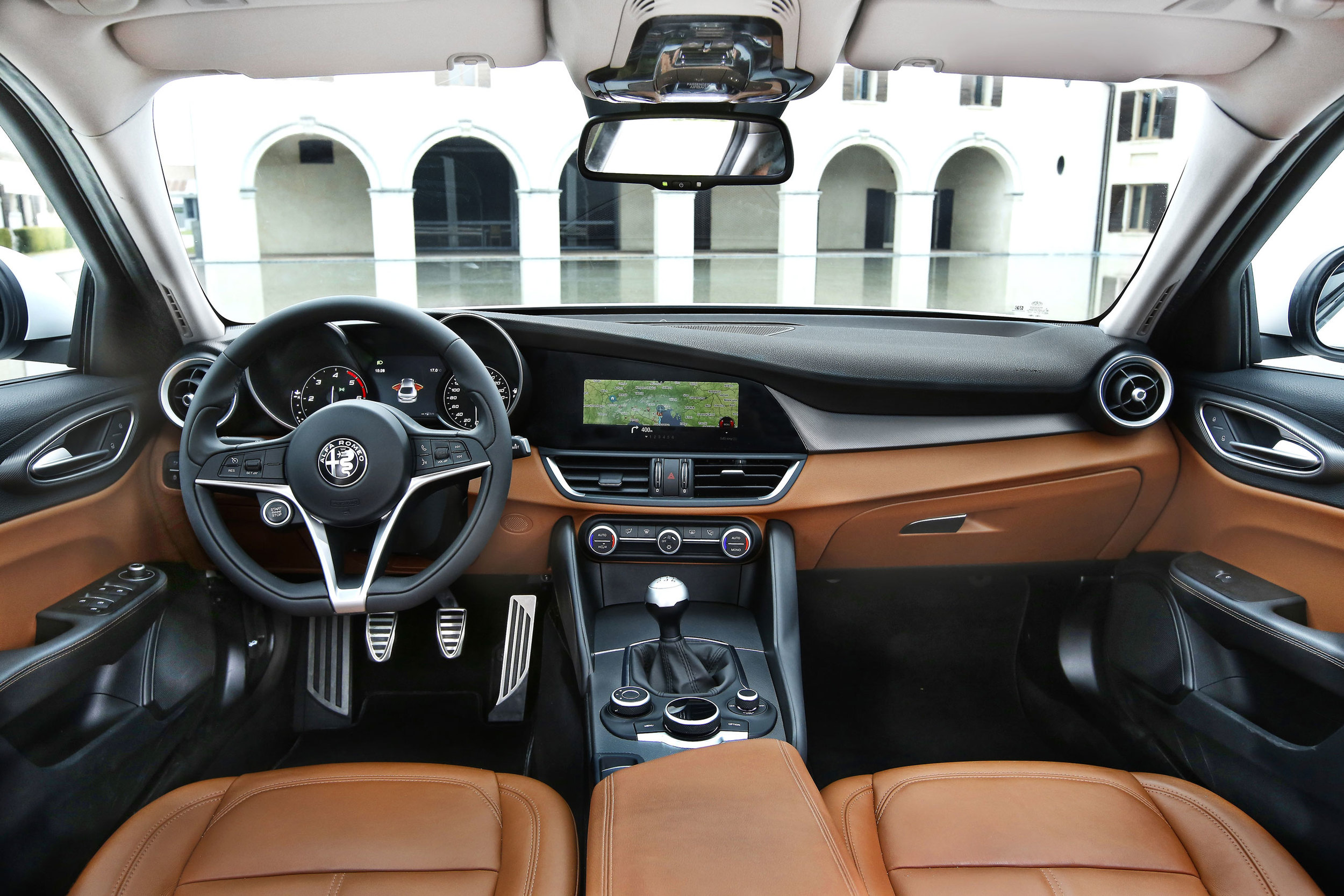
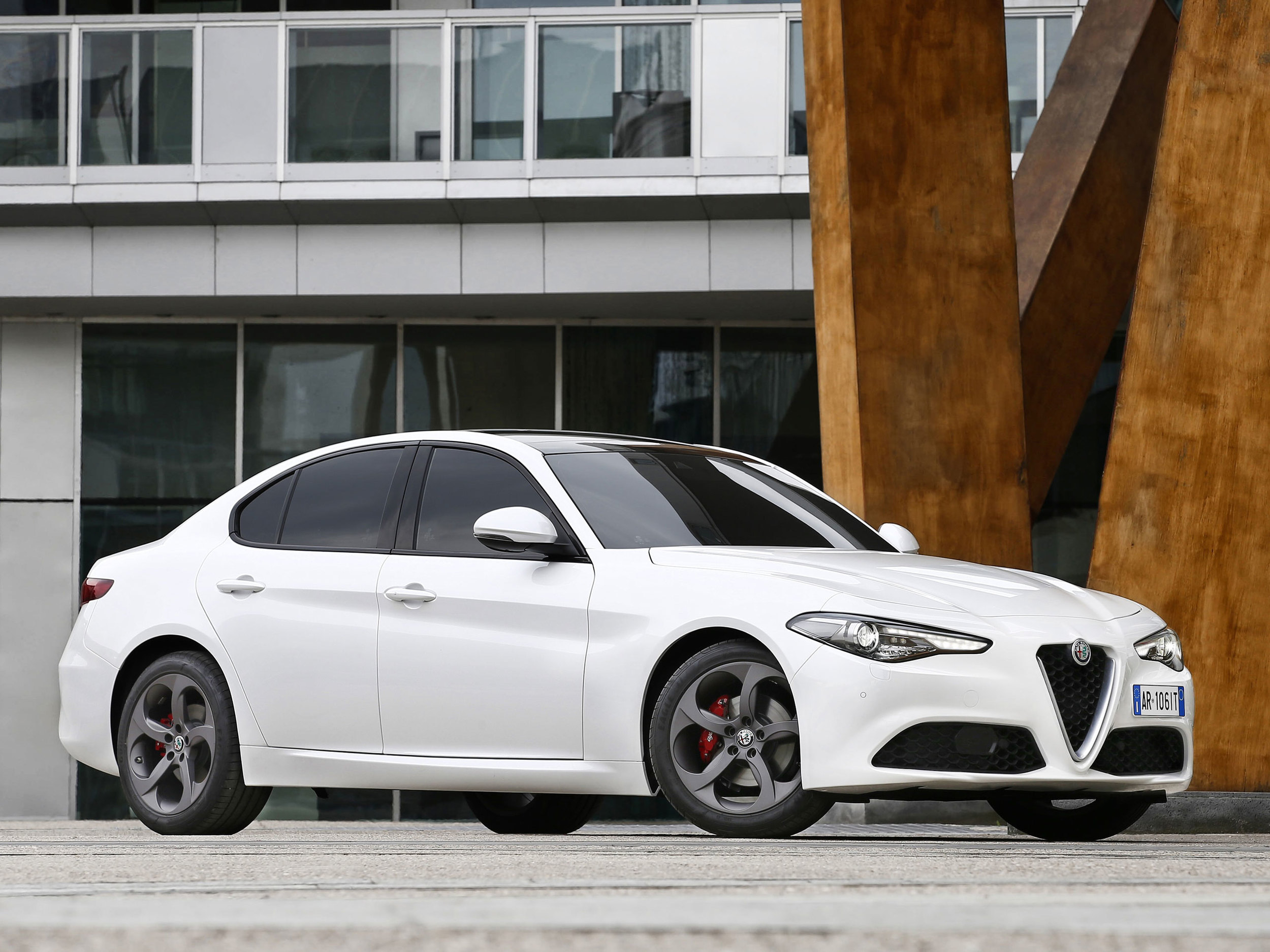
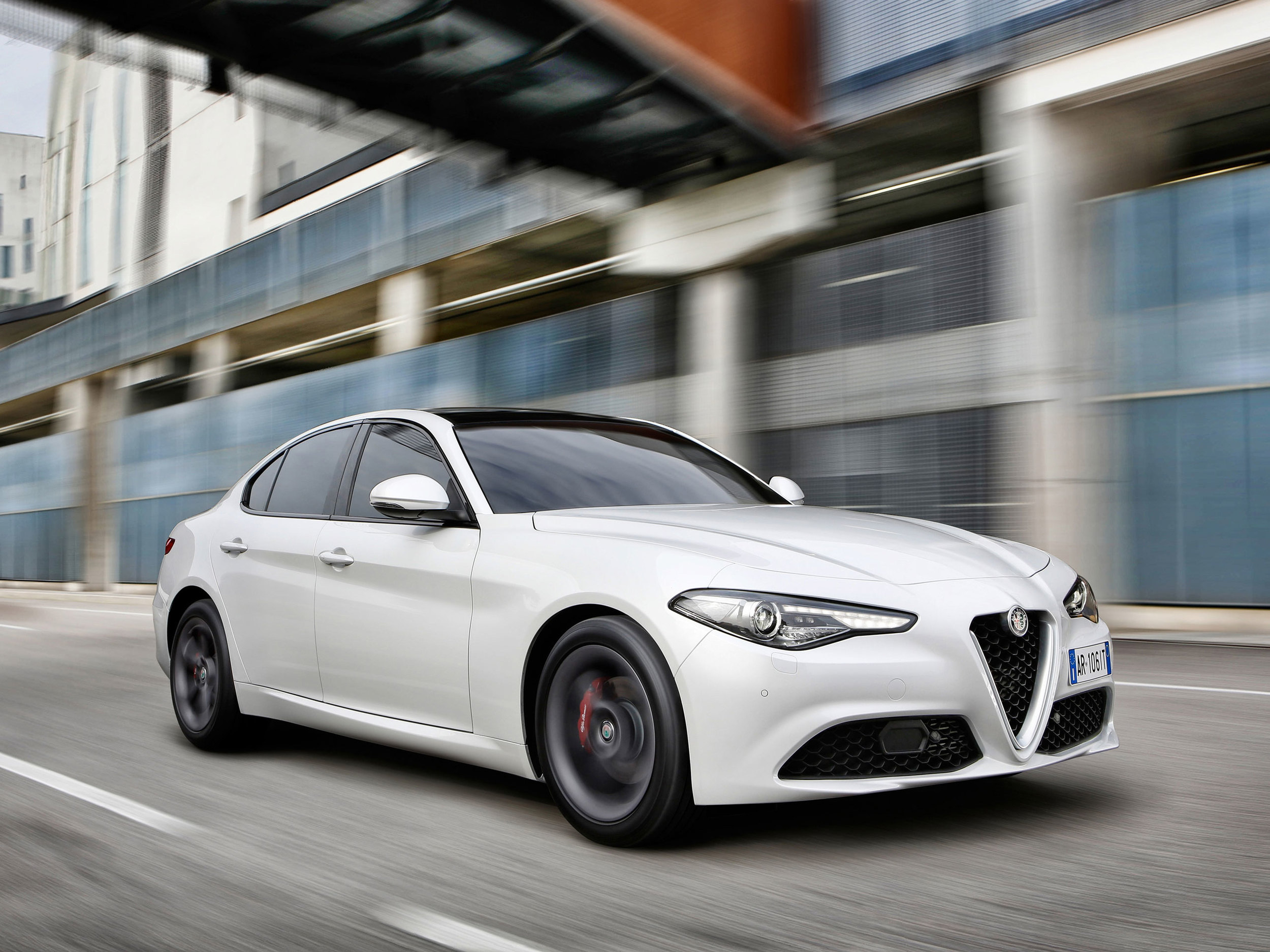
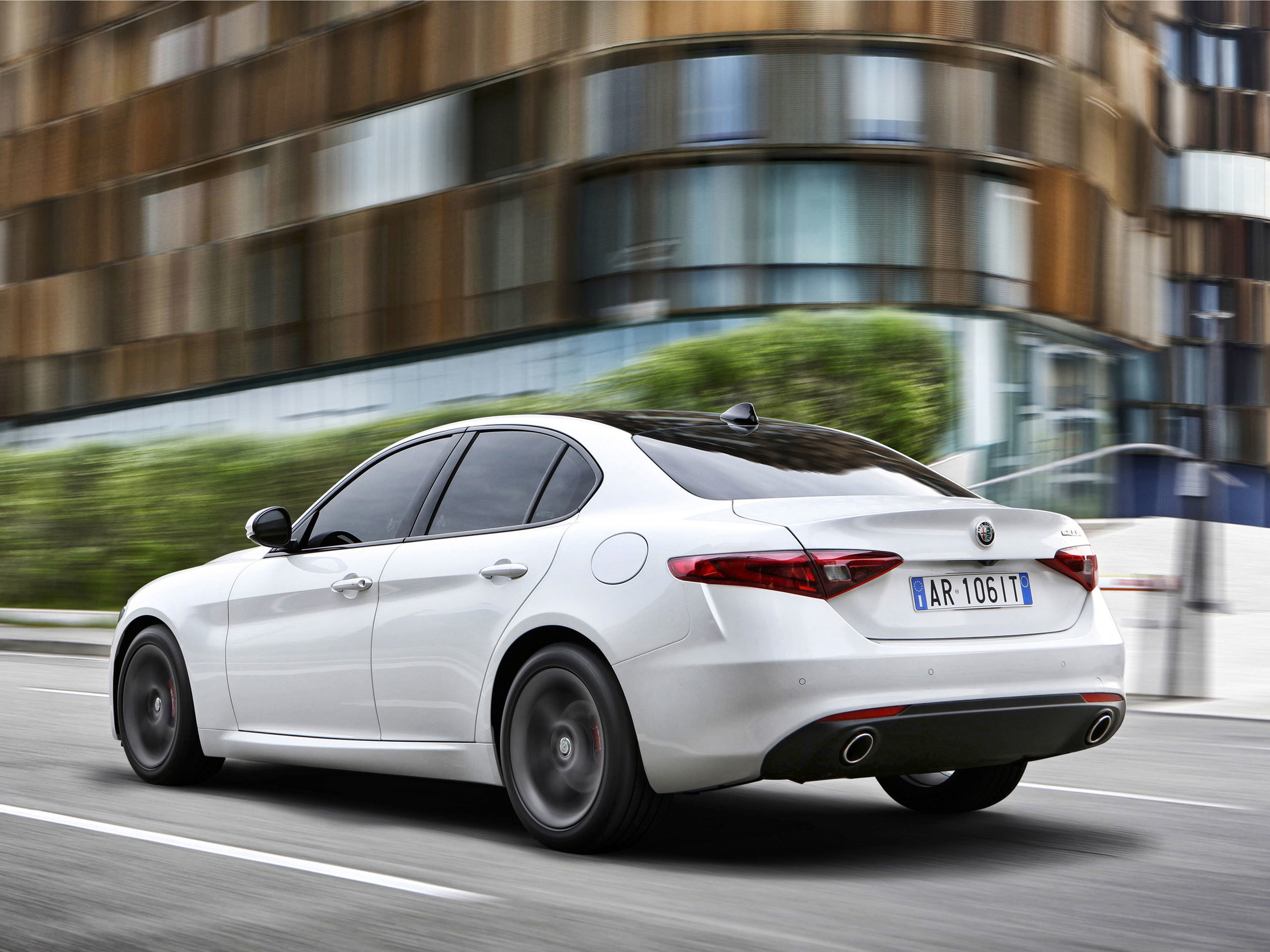

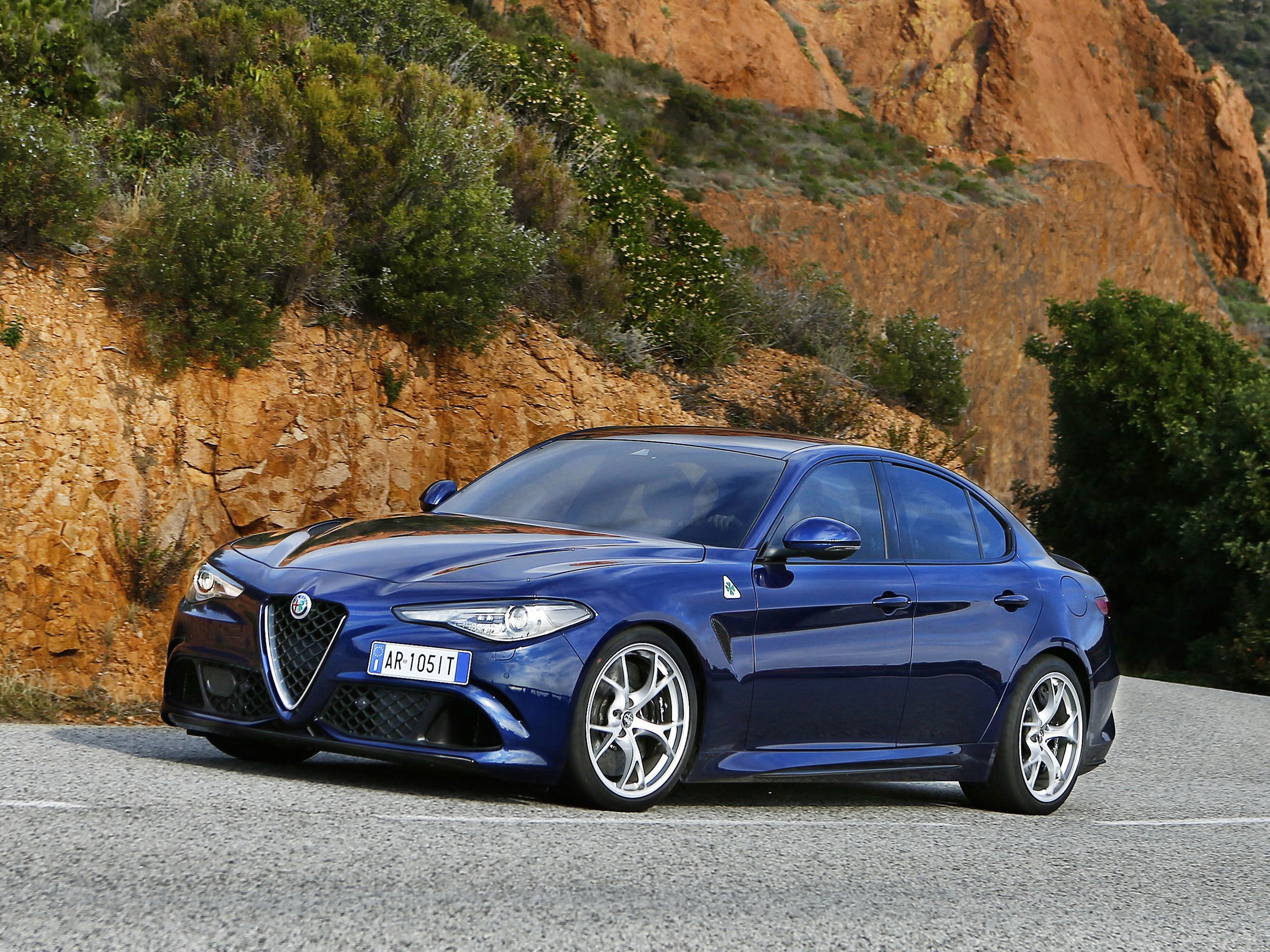
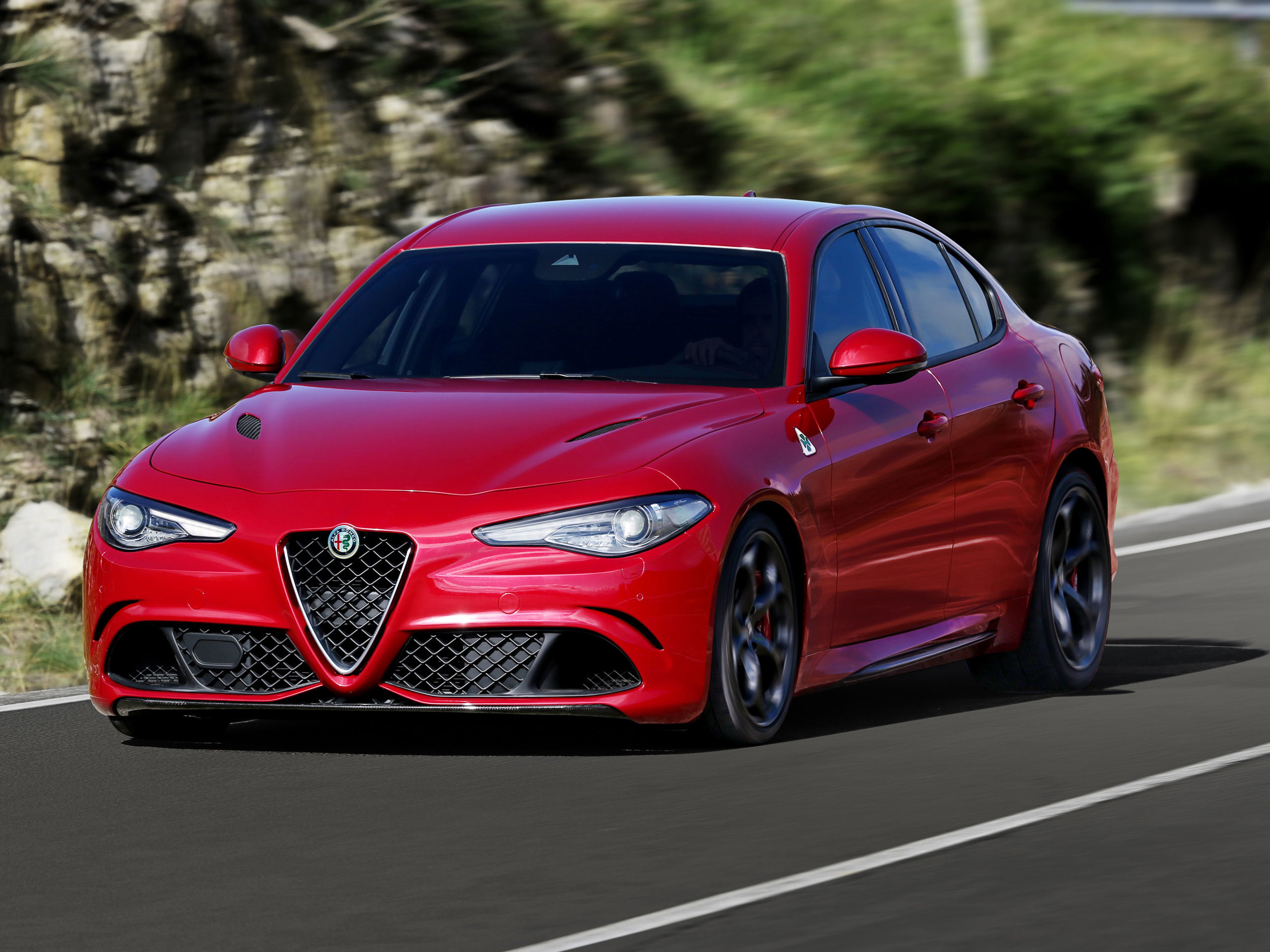
The UK media has had its first opportunity to drive the all-new Alfa Romeo Giulia range both on the track and on the road.
The new rear-wheel drive Giulia was put through its paces at the Balocco Proving Ground (Centro Sperimentale di Balocco) in northern Italy.
The Giulia design features short overhangs, a long bonnet, muscular haunches and, according to Alfa Romeo, the longest wheelbase in its segment.
Careful management of weights and materials have helped the car achieve a near perfect 50/50 weight distribution across its axles while the suspension has been tuned to maximise its dynamic abilities and enhance driving comfort.
High-strength and ultra-lightweight materials have been deployed, including carbon fibre for the driveshaft, aluminium composite and plastic for the rear crossmember and aluminium for the doors, wings, engines (petrol and diesel), brakes and suspension –resulting in a dry weight of 1,374kg for the 180hp 2.2-litre turbo diesel version.
In the Quadrifoglio version, the use of ultra-lightweight materials extends to other components including carbon fibre for the bonnet, roof, front splitter, rear spoiler and body inserts, as well as aluminium for the doors and wings.
The braking system has been tweaked using aluminium elements, while carbon ceramic brake discs and front seats with a carbon fibre structural frame can also be specified as options. With a dry weight of 1,524 kg, the power-to-weight ratio of the Quadrifoglio version is 335hp per tonne (2.99kg/hp).
A full range of all-new, all-aluminium engines power the new Giulia saloon, all manufactured in Italy at the Termoli (petrol engines) and Pratola Serra (diesel engines) factories.
The four cylinder, 2.2-litre turbo-diesel engine is the first all-aluminium diesel unit in Alfa Romeo’s history and uses latest-generation MultiJet II injection system and a variable-geometry turbocharger, with a balancing countershaft to ensure smoothness and refinement across the rev range.
Two versions will be available, one producing 150hp at 4,000rpm and 380Nm at 1,500rpm, and the other with 180hp available at 3,750rpm and 450Nm at 1,750rpm, and both will be combined with an eight-speed automatic transmission as standard for RHD markets.
Exclusive to the Quadrifoglio version is a Ferrari-inspired, V6 BiTurbo petrol engine, constructed entirely of aluminium and delivering 510hp and 600Nm of torque, for a top speed of 190mph (307km/h) and a 0-62mph time of 3.9 seconds.
In the UK, this engine will only be offered with an advanced eight-speed automatic transmission, with paddle shifters and performance calibration as standard.
The cabin design of the new Alfa Romeo Giulia is centred around the driver with the main controls grouped together on the small steering wheel. The human-machine interface (HMI) consists of two simple, user-friendly knobs for adjusting the Alfa DNA selector and the infotainment system. Premium materials, including carbon fibre and real wood, have been chosen for their visual and tactile qualities and assembled in such a way to make the human touch visible.
Depending on trim level, a 3.5- or 7-inch colour instrument display offers the driver essential information about the car at-a-glance. Organised in four screenshots, the information changes according to the DNA mode selected by the driver, offering a variety of readings including lateral acceleration, fuel consumption and suggested gear shift points.
The new 8.8-inch Connect Nav 3D system on the Alfa Romeo Giulia – developed in collaboration with Magneti Marelli – is controlled by a Rotary Pad and offers a series of features and functions, including a next-generation HMI human-machine interface.
Advanced voice recognition ensures complete connectivity with all mobile devices (Apple iOS and Android) including full control of Bluetooth calling and music streaming, as well as DAB digital radio and Hi-Fi digital audio.
The new Giulia is equipped with the latest driving assistance technology, including Forward Collision Warning (FCW), Autonomous Emergency Brake with pedestrian protection (AEB), Lane Departure Warning, Adaptive Cruise Control (optional) and Blind-Spot Monitoring (optional).
The light clusters are equipped with halogen lamps or latest-generation Xenon technology with 25W or 35W modules, the latter of which is equipped with AFS (Adaptive Front-lighting System) to redirect the light beam while cornering to improve visibility.
The new Alfa Romeo Giulia will go on sale in the UK in September with pricing and final UK specifications announced closer to the car’s UK launch.
